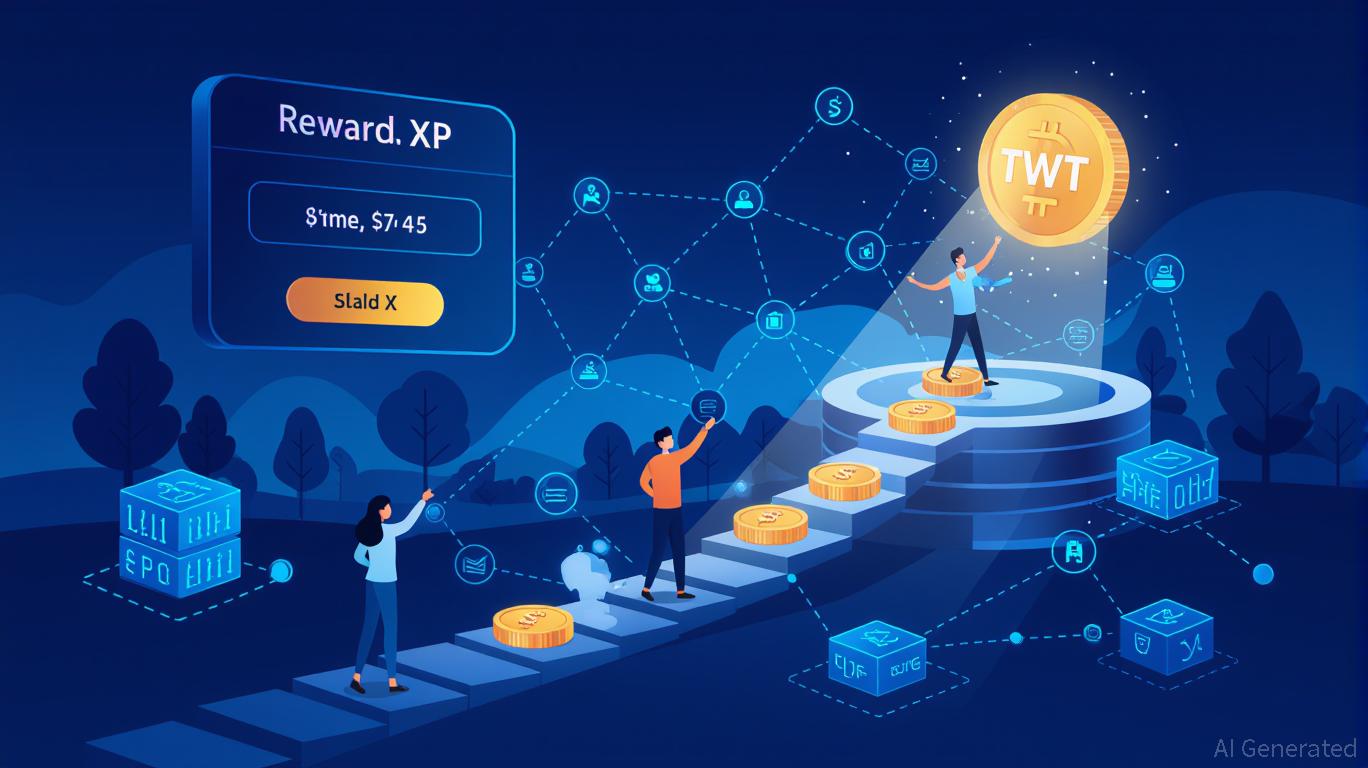Vitalik Buterin Supports ZKsync: What This Means for Ethereum’s Development
- Vitalik Buterin endorsed ZKsync's Atlas upgrade, promising 15,000 TPS, 1-second finality, and near-zero fees for Ethereum scalability. - The upgrade enables direct L2-L1 connectivity, transforming Ethereum into a real-time liquidity hub for institutional and RWA applications. - ZK token surged 50% post-endorsement, highlighting market validation of scalability solutions aligned with Ethereum's decentralization goals. - Upcoming token unlocks from Linea, Aptos, and Avalanche may introduce volatility, emph
The Technical Breakthrough: ZKsync's Atlas Upgrade
Launched in 2025, the Atlas upgrade by ZKsync marks a transformative leap for Ethereum’s Layer-2 (L2) framework. By facilitating seamless interaction between L2 networks and Ethereum’s Layer-1 (L1), this upgrade reimagines the mainnet as a real-time liquidity center, removing the need for divided liquidity pools, as detailed in a
The Airbender system, a core innovation behind this progress, enables rapid confirmations and cross-chain transactions, as highlighted in a

Market Implications: Investor Sentiment and Token Valuation
The technical strengths of the Atlas upgrade have already begun to influence the market. After Buterin’s endorsement, the
Additionally, the upgrade’s focus on scalability fits within a larger trend in crypto asset valuation. Studies show that investor sentiment—tracked by metrics like the fear and greed index and Google search trends—often predicts price changes, as discussed in a
Broader Market Context: Token Unlocks and Investor Psychology
While ZKsync’s achievements are significant, they take place within a wider environment of token releases and shifting market conditions. For example, in the second week of November 2025, projects such as
The Road Ahead: On-Chain Scalability as a Catalyst
The intersection of technological breakthroughs and market sentiment indicates that on-chain scalability will remain a central focus in 2025 and beyond. For Ethereum, the Atlas upgrade by ZKsync illustrates how Layer-2 innovations can overcome the network’s previous limitations and broaden its practical uses. As Buterin observed, this upgrade is shifting Ethereum from a “passive settlement network” to an “active capital hub,” a transformation that could attract new users and applications, as highlighted in the CryptoFrontNews article.
Matter Labs’ intention to launch a ZK governance token further emphasizes this direction, giving the community a greater role in guiding the network’s future, as reported by CryptoFrontNews. These steps are in line with Ethereum’s overarching goal of building a decentralized, scalable, and secure platform that can compete with traditional financial systems in both efficiency and accessibility.
Conclusion
Vitalik Buterin’s support for ZKsync goes beyond simple approval; it marks a pivotal moment in Ethereum’s ongoing transformation. By adopting on-chain scalability solutions like the Atlas upgrade, Ethereum is not only tackling technical barriers but also redefining its position within the global financial ecosystem. For investors, this represents a crucial turning point: projects that effectively balance scalability with decentralization are poised for continued value growth, fueled by both institutional interest and retail participation.
As the cryptocurrency sector faces the complexities of 2025, the relationship between technological progress and investor sentiment will continue to play a key role. The advancements of ZKsync, together with Ethereum’s strategic direction, provide a strong example of how on-chain scalability could become the next major force driving crypto asset valuations.
Disclaimer: The content of this article solely reflects the author's opinion and does not represent the platform in any capacity. This article is not intended to serve as a reference for making investment decisions.
You may also like
Market Pullback: Buy Now or Keep Waiting?
Trust Wallet Token (TWT) Price Forecast: Examining Key Drivers, Blockchain Activity, and Tactical Considerations
- Trust Wallet's November 2025 launch of Trust Premium repositioned TWT as a utility-driven loyalty token, incentivizing long-term user engagement through tiered rewards. - On-chain data shows reduced TWT velocity and increased wallet retention as users lock tokens for gas savings, exclusive features, and accelerated tier progression. - Price stabilized at $1.3135 with analysts projecting potential $5.13 peak in 2025, driven by cross-chain utility and retention metrics from the loyalty program. - Experts h

TWT's Updated Tokenomics Structure: Could This Revolutionize DeFi?
- Trust Wallet's TWT introduces Trust Premium, a tiered rewards system linking token utility to user engagement via TWT and Trust XPs. - The model aims to reduce selling pressure and stabilize liquidity by incentivizing long-term TWT holdings and ecosystem participation. - Unlike Lido’s automated buybacks, Trust Wallet prioritizes organic growth through user retention and functional utility, aligning with broader industry trends toward value-driven tokenomics. - Analysts project $5.13 price peak for TWT in

Bitcoin News Update: Established Companies Venture into Meme Coin Sector Amid Retail Buzz Fueled by Bear Market
- Traditional firms like Scilex and Datavault AI enter meme coin space via airdrops, blending crypto innovation with fan engagement through event-linked tokens. - Meme coin whales accumulate aggressively amid bearish crypto markets, with projects like ASTER and BullZilla seeing surges in speculative trading and whale inflows. - Retail investors flock to meme coins as "safe havens" during Bitcoin consolidation, driven by social media hype despite high volatility and regulatory uncertainties. - Corporate exp
